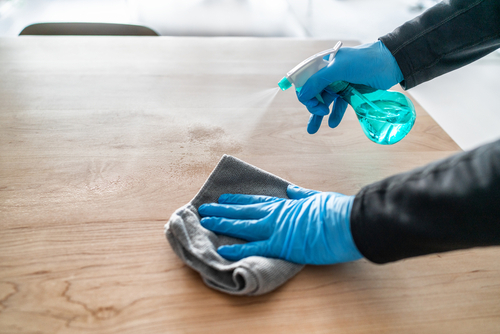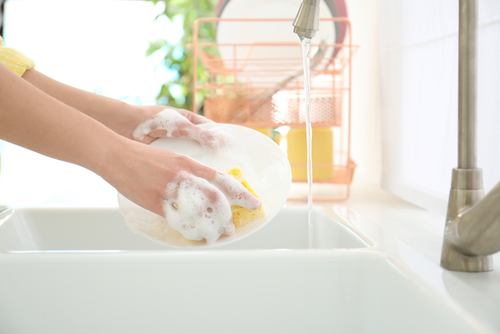
Mold Prevention and Removal: A Comprehensive Guide
August 25, 2023
Benefits of Regular Office Chair Cleaning
September 11, 2023Effective Dusting Methods: Dust-Free Haven
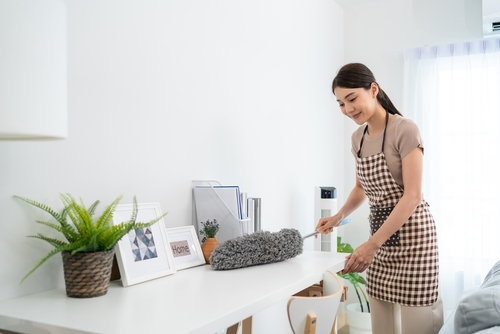
Effective Dusting Methods Dust-Free Haven
Effective Dusting Methods: Dust-Free Haven. Household dust, a seemingly never-ending adversary, settles on surfaces, subtly impacting both health and aesthetics.
This comprehensive guide unveils the secrets to effective dusting methods that transform your living spaces into pristine sanctuaries.
Say goodbye to the tyranny of settling dust as we delve into strategies, tools, and techniques that will help you conquer this persistent foe!
Read on – Effective Dusting Methods: Dust-Free Haven:
Understanding Household Dust
Dust is not just a trivial nuisance; it’s a complex mixture of particles from various sources. These include outdoor influences such as pollen, dirt, and pollutants that find their way indoors.
Additionally, indoor contributors like pet dander, dead skin cells, and fabric fibers contribute to the ever-accumulating layer of dust in our homes.
Regular dusting isn’t just about aesthetics; it’s also about safeguarding our health.
Sources of Household Dust

Outdoor Influences
The great outdoors can be the origin of much dust entering our homes. Pollen, carried by the wind, infiltrates our living spaces, triggering allergies and respiratory issues.
Dirt and environmental pollutants hitch a ride on shoes and clothing, settling on our surfaces and diminishing indoor air quality.
Indoor Contributors
Inside our homes, unsuspecting sources contribute to the formation of dust.
Pet dander from our beloved companions, dead skin cells shed by humans, and fabric fibers released from furniture and textiles all contribute to the microscopic dance of particles that coat our surroundings.
Common Mistakes in Dusting
Using Dry Rags
One of the most common misconceptions about dusting is the use of dry rags. This approach merely stirs up dust, allowing it to resettle on other surfaces. Instead of capturing dust, it inadvertently spreads it, perpetuating the cycle.
Not Cleaning Top to Bottom
Neglecting to dust from top to bottom is a mistake that often goes unnoticed. Dust naturally falls downward due to gravity, so starting with higher surfaces ensures that any unsettled particles land on surfaces that haven’t yet been cleaned.
Ignoring Hidden Areas
Dust is not picky; it finds its way into every nook and cranny. Overlooking hidden areas like blinds, under furniture, and behind appliances gives dust a safe haven to accumulate, potentially leading to more significant cleaning challenges later.
Tools for Effective Dusting
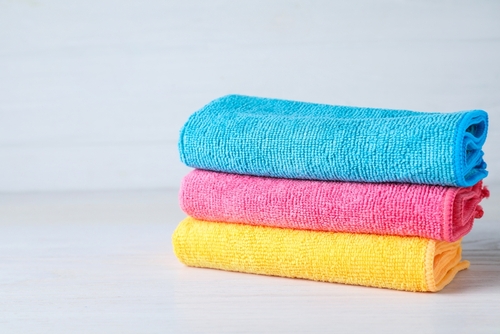
Microfiber Cloths
Microfiber cloths are unsung heroes in the war against dust. Their fine fibers effectively trap dust particles, preventing them from being released back into the air as you clean. These cloths are versatile, suitable for various surfaces, and can be washed and reused.
Extendable Dusters
Hard-to-reach areas and high surfaces often go untouched during routine cleaning. Extendable dusters with telescopic handles allow you to conquer these spaces without precarious balancing acts.
Vacuum Cleaners with HEPA Filters
Investing in a vacuum cleaner with a High-Efficiency Particulate Air (HEPA) filter can make a significant difference. These filters are designed to capture even the finest dust particles, ensuring they remain trapped and not re-enter the environment.
Step-by-Step Guide to Efficient Dusting
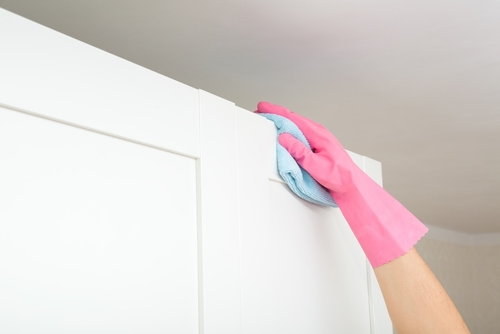
Begin at the Highest Point
The most effective dusting strategy starts from the highest point in the room. This might include cleaning ceiling fans, the tops of bookshelves, and other elevated surfaces. By beginning here, you prevent dust from resettling on already cleaned areas.
Tackle Surface Dust
Different surfaces require distinct cleaning methods. Wood, glass, and electronics—each demands specific care to remove dust without causing damage. Using appropriate cleaning agents and tools enhances the effectiveness of your efforts.
Vacuum Last
Vacuuming should be the final step in your dusting routine to ensure that all lingering dust is picked up. This practice ensures that any unsettled particles during the cleaning process are effectively removed.
Regular Maintenance to Minimize Dust

Weekly Dusting Routines
Incorporating regular dusting routines into your weekly cleaning regimen prevents dust buildup. Consistent efforts significantly reduce the overall cleaning effort required over time.
Benefits of Air Purifiers
Air purifiers equipped with HEPA filters are powerful allies in the battle against dust. They work to remove airborne particles, enhancing indoor air quality and decreasing the amount of dust that settles on surfaces.
Humidity Control
Maintaining optimal humidity levels in your home can play a pivotal role in reducing dust. Dry air impedes dust particle movement, making it harder for them to settle on surfaces.
Protecting Valuables from Dust
Artwork and Electronics
When dusting around artwork and electronics, a delicate touch is essential. Microfiber cloths and soft brushes should be employed to prevent accidental damage.
Delicate Collectibles
For delicate collectibles, take extra precautions. Gentle dusting methods, such as using compressed air or soft paintbrushes, protect their intricate details and ensure their long-term value.
Books and Magazines
Dust dulls the appearance of books and magazines and can lead to deterioration over time. Regularly dusting these items helps maintain their readability and condition.
Pet-Related Dust and Dander
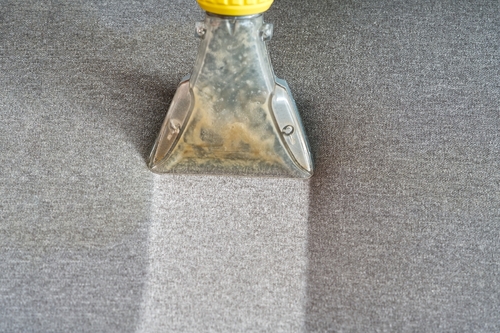
Frequent Grooming
Regular grooming of pets keeps them comfortable and reduces the amount of fur and dander they shed. This proactive approach minimizes the presence of pet-related dust in your home.
Specialized Pet Vacuums
Pet-specific vacuum cleaners have features designed to collect pet hair and dander efficiently. Their specialized brushes and filters make them invaluable tools for pet owners.
DIY Dusting Solutions
Homemade Dusting Sprays
Crafting your own dusting sprays using natural ingredients like vinegar and essential oils can be effective and environmentally friendly. These sprays offer an alternative to commercial products.
Innovative Dusting Hacks
Household items such as dryer sheets and paintbrushes can be repurposed for creative dusting hacks. These unconventional methods often yield surprisingly effective results.
Effective Dusting Methods: Dust-Free Haven – Conclusion
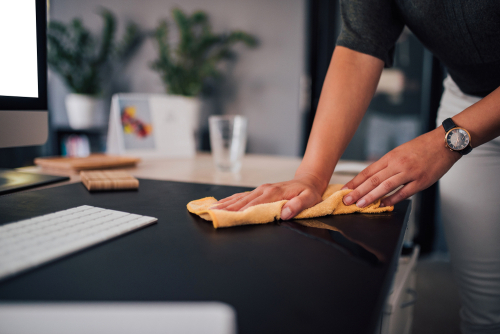
In conclusion, effective dusting is not just about cleanliness—it’s about fostering a healthier living environment and preserving the beauty of your home.
By understanding the composition of dust, avoiding common mistakes, and arming yourself with the right tools and techniques, you can ensure that your living spaces remain free from the tyranny of settling dust.
Begin your journey towards a dust-free haven today. Integrate our comprehensive dusting methods into your regular home cleaning routine and experience the transformative. Contact us today!

